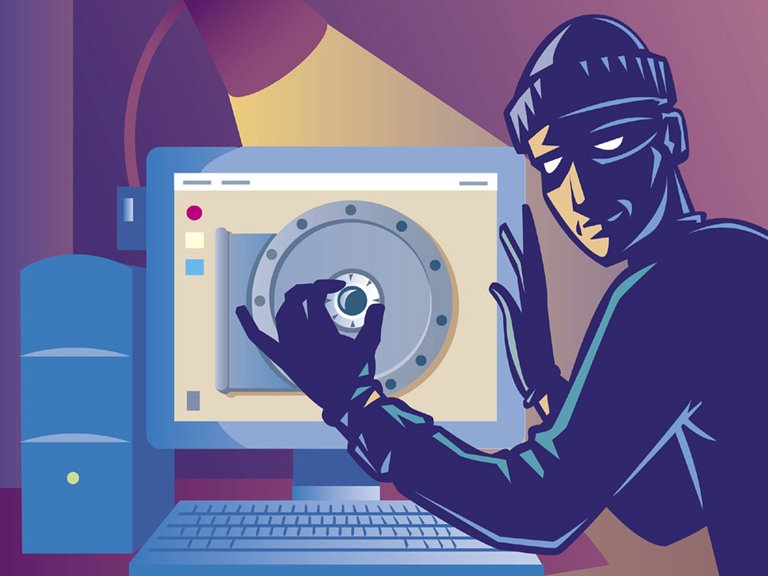
You might have heard of cryptocurrencies experiencing a 51% attack on their networks and be thinking that it’s awful and how could this kind of thing happen on the blockchain?
Well, because it can only happen on the blockchain – and it is rather awful. Essentially in a 51% attack, malicious miners manage to gain control of a cryptocurrency’s blockchain in a very particular manner of hacking. By gaining more than half the hashing power on a cryptocurrency’s blockchain, it means that one can gain tentative authority over the network and can authorize or censor any transaction for as long as they are in control.
This often leads to “double-spend” attacks, whereby the hacker will first suspend transactions and then if any transactions were attempted while they had control of the network, they would reverse them and move the funds from the transactions straight into their pocket, meaning that the coins would be double-spent – from the originally intended account to the hacker’s wallet.
It might sound like a great debacle to implement a 51% hack, but it can be startling simple owing to the fact that the hashpower needed to hack can be hired from “cloud mining” firms or mining pools. This means that hackers can pay for control of the majority of the blockchain as much as it might cost for a certain time.
That cost and that time are exactly what we are going to be exploring – how much you would be spending to execute a 51% hack on a major blockchain. Taking values and data from Crypto51, we can find out a hack costs for the networks of Bitcoin Cash, Bitcoin Bitcoin Private, and Old Mac Bitcoin as a comparative.

What is a 51% attack?
We’ve just heard the news that ZenCash has experienced a 51% attack and before we’ve seen Verge, Monacoin, and Bitcoin Gold all face similar malicious occurrences.
I know what you’re thinking. “51%! An attack! How awful!”
Well, yes, but what actually does it mean?
Essentially it happens when a group of malicious miners manages to take authority of a cryptocurrency’s blockchain in a very particular manner of hacking.
This type of hacking can only occur on a blockchain – making it a new form of online theft.
To execute a 51% attack, hackers would have to gain more than half of the network’s mining total hashrate – this means that the hacker would need to gain the majority of the total the computing power that users on a blockchain execute at a given time.
By doing so, this would give a hacker the authority to censor recorded data on a blockchain and potentially force the blockchain to accept fraudulent blocks.
After gaining at least 51% of the blockchain’s authority, the hackers could then curb user’s payments going through, meaning that they would not verify transactions as complete.
A classic way of a successfully executed 51% attack is in the form of a “double-spend” attack. This means that after halting transactions, the hackers reverse any transactions that were attempted while they had control of the network and they would then move the funds from the transactions straight into their pocket, meaning that the coins would be double-spent – from the originally intended account to the hacker’s wallet.
During the time in which the attack occurs, hackers essentially use the hashpower (which is the majority of the network’s computing power) to create a new fork of the cryptocurrency’s blockchain. The fork will rapidly increase and will become longer than the network’s verified one, allowing them to employ the “double-spend” tactic.
Since the hacker is the authority of the blockchain, they launder the money into their account, force the blockchain to accept the new, longer fork. Funds vanish from the account to which the user intended and appear in the attacker’s wallet as if it was authorized officially.
Regrettably, a 51% attack against cryptocurrency networks can be a startlingly easy endeavor, since hashpower can be hired from “cloud mining” firms and hackers can pay for control of the majority of the blockchain.
The hacker can be in and out and clear out a huge amount of money from the blockchain into their accounts in minutes.
In defusing a 51% attack, prevention is far easier than cure. The most effective way for blockchain networks to prevent such malicious hacking attempts is to ensure a varied and decentralized base of miners, and to ensure resistance to high-end mining rigs. Recent findings indicate that many cryptocurrency networks may be easier to hack than previously thought.
NOTE:-i didn'nt know about 51% attack so i search it and copy the information from https://www.coininsider.com to provide the information to the readers
Hi! I am a robot. I just upvoted you! I found similar content that readers might be interested in:
https://www.coininsider.com/what-is-a-51-percent-attack/
Very well put... Its a new form of hacking and it's unfortunate... great explanation and possible solution...
yes
thanks to